Research
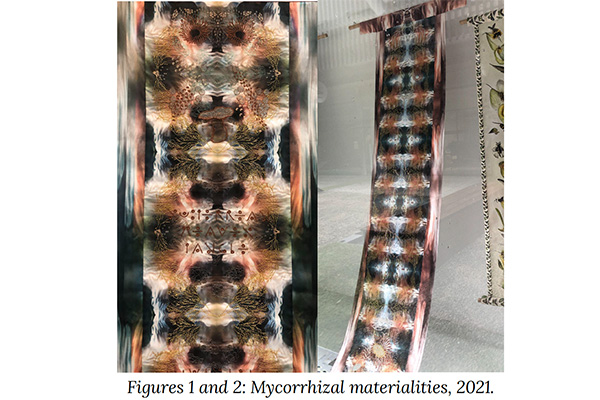
Mycorrhizal Materialities: positioning the entanglement of human and machine intelligence
Presented in 2023 at International Symposium for Electronic Art (ISEA) in Paris France. Video of presentation kindly added here by the RMIT Imaging Futures Lab. Full text forthcoming when proceedings are published.
Machine intelligence is increasingly being used in the world with sometimes dramatic effects on human and other-than-human lives through its decision making capacity. Much artificial intelligence (AI) and machine learning (ML) is built on metaphors that centre extraction, competition and control. These also position AI itself as a resource to be extracted and controlled, paving a troubling path for speculative futures where AI may gain emergent or ambiguous levels of sentience. These metaphors are part of a historical trend where humans place themselves above the other-than-human world, and this has formed the basis of an extractive and one sided relationship with that world. In light of this, what new metaphors might we employ to platform the relationships between human and machine intelligences? Thinking through mycorrhizae could be a productive way to foreground the entangled, generative nature of exchange between human and machine intelligences. This paper will briefly explore metaphor in human-computer interaction (HCI) and AI, before making an offering to think about these things through the material of the mycorrhiza, a symbiotic site of exchange between plants and fungi. It will then briefly detail a creative project that has emerged from this mycorrhizal thinking to produce machine imagined textiles and embroideries. It then concludes with a call to embed relational thinking into future practices between human and machine intelligences in order to create more equitable and even mutualistic outcomes.
Keywords: Machine learning, Materiality, Mycorrhizae, Metaphor.
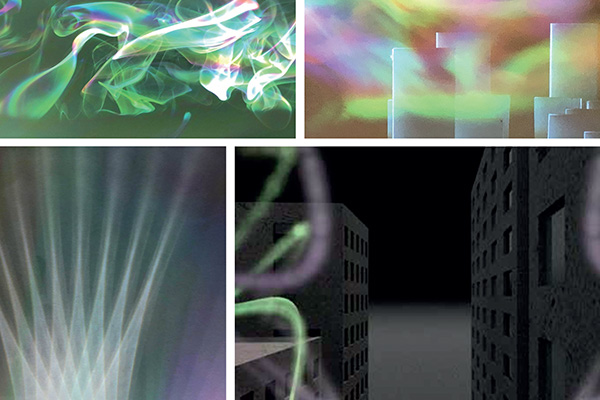
Interior Imaginings: Centring curiosity and imagination as key design tools in first year
Published in 2023 here in Charette Journal, and written with Olivia Hamilton and Ying-Lan Dann.
This project case study, Interior Imaginings, is an interior design studio that explores how imagination and curiosity can be actively developed in students early in their education and the benefit of this emphasis during online delivery during the Covid-19 pandemic. Carla Cesares’ text, ‘The Habit of Curiosity’, empowered students to identify and hone their individual and curiosity-driven processes, and the project demonstrated how curiosity can enliven practice within restricted circumstances. The focus on students’ individual curiosity sustained engagement across a diverse learning community and developed how the students understood themselves as tertiary design learners and future design practitioners.
Keywords: interior design, design pedagogy, curiosity, imagination, The Capitol.
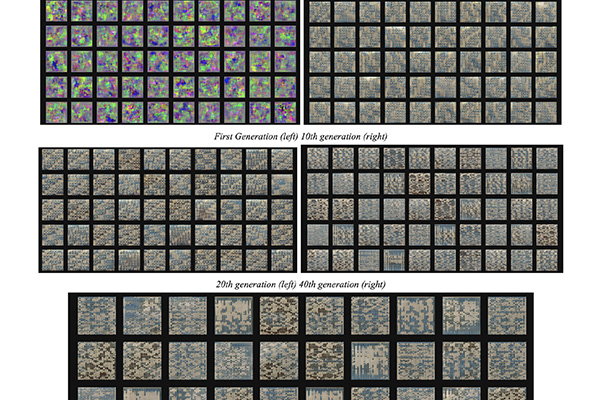
Knitting Algorithmic Assemblages
Published in 2022 here in TEXTILE Journal.
This paper aims to explore knitting as a metaphor for raveling and unraveling the emerging relationships within assemblages of human and machine intelligences. Centered on a practice- based investigation into the generation of knitting machine punchcards through the use of machine learning models, the project reveals the co-creative capacities and implications of such assemblages. Knitting is a process of creation, where interlocking loops of yarn repeat to generate a surface. Repetition through patterning produces complexity and texture; knitting itself is an assemblage including human, technology and surface. Artificial intelligence (AI) and machine learning (ML) are human inventions around which orbit various metaphors of acceleration, uncontrolled emergence and ecology. These metaphors delimit our understanding of machine intelligence, positioning it as separated and extractive. In this paper, knit is employed as a metaphor and a practice to locate the looped and interlocking generative nature of human and machine intelligences. This metaphor also joins computing to its shared history with textiles through punch cards and the Jacquard head. The knits in this project materialize a relation between machine and human intelligences. Human subjectivities manifest within their patterning, questioning the perceived impartiality of artificial intelligence that is often bound to contemporary metaphors.
Keywords: machine knitting; machine learning; GANs; assemblage; metaphor; materiality
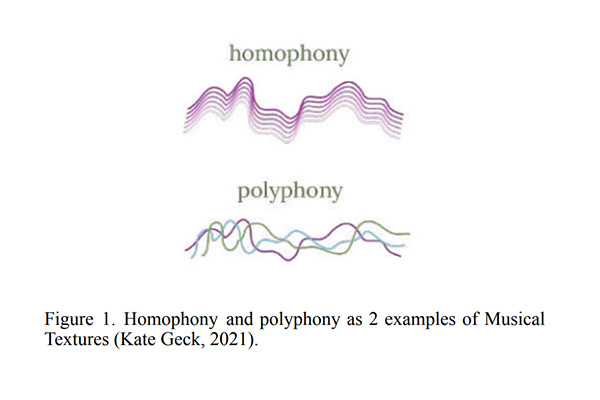
Polyphonic Materiality in Extended Reality
Published in 2022 here (pages 707-711) as part of the proceedings of the International Symposium for Electronic Art Barcelona, Spain.
Much human-computer interaction design (HCI) research on
materiality investigates the ways in which computational qualities become embedded within physical materials, often under the banner of ‘the material turn’. With the development of extended reality (XR) and the emerging metaverse, how might we understand and articulate the qualities and agencies of digital materials as they overlay, embed and replace the physical world? This paper advocates for an ontology of digital materials to understand how they actualise in the world without being tangible, providing a way for XR designers and artists to critically work with them as part of an assemblage. It will introduce an idea of polyphonic materiality, drawing on Anna Lowenhaupt-Tsing’s concept of polyphonic assemblage. It will locate digital materiality within Giles Deleuze’s idea of the virtual and actual, and Karen Barad’s concept of agential realism. This provides a conceptual underpinning to the proposition of polyphonic materiality as a typology for doing XR design, where material properties emerge as various physical and digital processes coalesce or intersect.
Keywords: Extended Reality, Materiality, Polyphony, Assemblage.
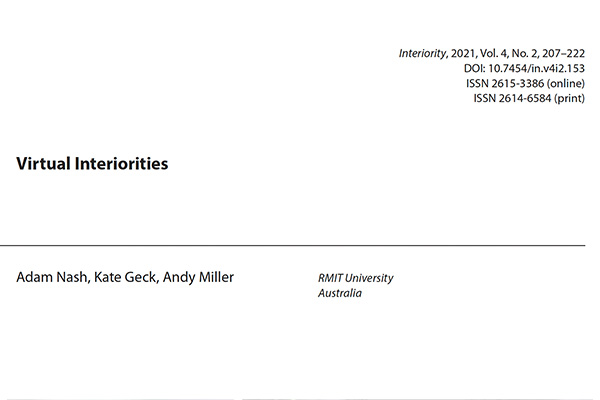
Virtual Interiorities
Published in 2021 here in Interiority Journal.
A practice of the virtual offers to interior design a dynamic conception of interiority that transcends simplistic representative notions of space, recognising the inseparable relationship of space and time, as well as an understanding of interiority as lived experience and its attendant amenability to active interpretation and therefore design. Ultimately, a practice of the virtual facilitates an understanding of interior as a dynamic and ongoing network of relations, and interior design as individuating participation in this network. In this article, we describe in detail an expanded notion of the virtual, and extrapolate how an understanding of this notion might help shape future interior design practice. We then offer some examples that might help translate these ideas into practice.
Keywords: virtual interior, virtual reality, interior design.
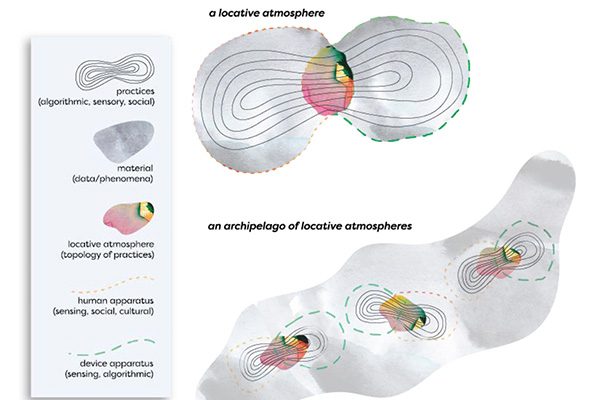
Locative Atmospheres: Practices in Networked Space
Published in 2020 here in IDEA Journal, 2020.
Smartphones and social media create locative atmospheres: transportable, affective spaces modulated by the data of our temporal, networked identities. How might theseatmospheres form, and how can we consider them in interior design?The conditions of these locative atmospheres are emergent; our practices with technology evolve quickly, requiring an understanding of how they affect us that extends beyond specific devices and applications. Within this ever-evolving context, it is crucial that interior design students have a philosophical understanding of the ways that technology might intersect with humans and lived space. Atmosphere is a useful spatial construct to begin unpacking this relationship in order to develop a critical stance. How might technology entangle with people atmospherically? This paper will read diffractively around theoretical positions, looking for patterns that might help to understand how atmospheres might emerge through technology. Initially, it will introduce atmospheric practices as a way of orienting the relationship between humans, affect, and atmosphere. It will then consider how the practices of technology are implicated in this relationship through the formatted subject and computational models of mind that are controlled by algorithms within the data gaze. Intersecting these ideas with Karen Barad’s agential realism allows that the practices of technology might be atmospheric, to view our engagement with networked devices as producing an ongoing archipelago of locative atmospheres. It will conclude by speculating on ways to design attentively in order to reconsider our entanglement with data-driven, networked technologies in lived space.
Keywords: atmosphere, practice theory, network culture, human-computer interaction.
